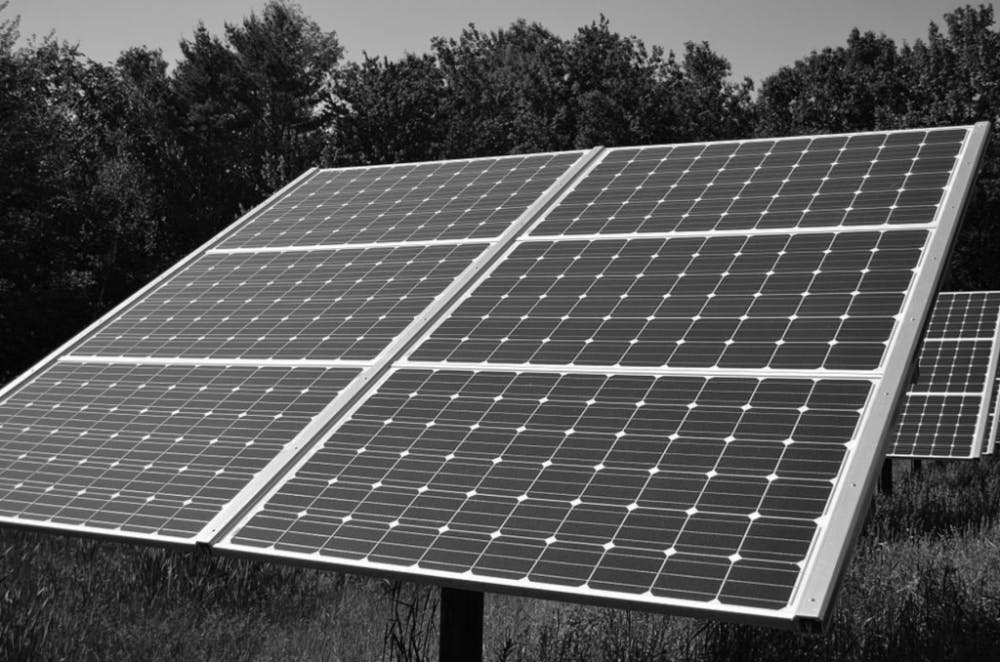A recent study led by Sang-Il Seok, a professor of energy and chemical engineering at Ulsan National Institute of Science and Technology (UNIST), developed a solution to support a new type of perovskite solar cell (PSC) in collaboration with researchers at the Korea Research Institute of Chemical Technology. Their findings were accepted for publication in Science in March 2017.
Solar cells convert sunlight into electrical energy and constitute solar panels. Through this conversion, energized electrons travel through the cell and excess energy is dissipated. The percentage of sunlight that can be converted into electricity is defined as the solar efficiency.
The perovskite solar cell has a high power conversion efficiency. It is typically created with titanium dioxide. However, titanium dioxide can damage the stability of a cell under direct illumination. After weeks of operation, a PSC’s performance deteriorates. A cell’s ability to withstand degrading due to illumination is called photostability. As the need for sustainable energy continues to grow, the goals of researchers is to increase photostability while keeping solar efficiency high when creating PSC technology.
As a leader in PSC technology, Professor Seok has established efficient architectures of hybrid inorganic-organic perovskite solar cells. Previous studies have improved the efficiencies of these cells to about 20 percent, but they all face the same lack of photostability.
Seok chose Lanthanum-doped BaSnO3 (LBSO) as a replacement for the titanium dioxide due to its electron mobility and suitable structure. However, LBSO faces one obstacle: It cannot be synthesized below 500 degrees Celsius. Seok and his team came up with a solution for preparing LBSO below 300 degrees Celsius.
The method the researchers used to create LBSO involved an intricate process. According to the research paper, a crystalline superoxide-molecular cluster (CSMC) containing well-dispersed nanoparticles in 2-methoxyethanol (2ME) is formed as a basis for LBSO. The compact, uniform LBSO layer can then be fabricated by spin-coating, a procedure used to deposit uniform thin films, onto a substrate.
To test the photostability of the formed LBSO based PSCs, the researchers conducted a light-soaking experiment. LBSO-based PSCs and traditional titanium dioxide-based PSCs were placed under a xenon or metal-halide lamp. The LBSO cells showed greater photostability while the titanium dioxide-based cells experienced a drop in solar efficiency upon initial illumination.
The PSCs created using LBSO electrodes and methylammonium lead iodide (MAPbI3) showed record-breaking performance in both efficiency and photostability. The improved PSCs had a power conversion efficiency of 21.2 percent compared to the 19.7 percent of a typical titanium dioxide based PSC.
The LBSO based PSCs also lasted longer, retaining 93 percent of their initial performance after 1,000 hours of full sun illumination. In contrast, the titanium dioxide based cells completely degraded after only 500 hours.
In addition to the improved PSC, the research team proposed a new solar cell manufacturing methodology called the Hot-Pressing Method. As its name suggests, the method involves applying high temperatures and pressure to two objects to achieve tight adhesion. The new method is believed to reduce costs and increase efficiency in creating new PSCs.
“This study combines the newly-synthesized photoelectrode material and the hot-pressing method to lower the manufacturing cost to less than half of the existing silicon solar cells,” Seok said in a press release. “This study helped us realize PSCs with a steady-state power conversion efficiency of 21.2 percent and excellent photostability.”
The ultimate goal of the researchers is to improve PSCs to the level of commercialization. Optimizing solar efficiency and photostability is essential for the cells to compete with traditional solar cells.
“This achievement, realized by the unique technology of domestic researchers, has surpassed the conventional low-efficiency and stability limit of next-generation solar cell technology,” Seok said.





